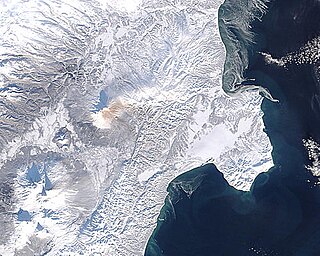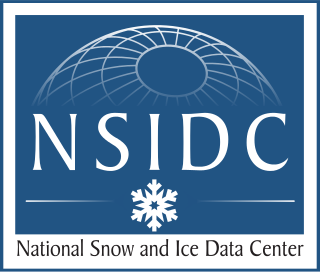
The Space Telescope Science Institute (STScI) is the science operations center for the Hubble Space Telescope (HST), science operations and mission operations center for the James Webb Space Telescope (JWST), and science operations center for the Nancy Grace Roman Space Telescope. STScI was established in 1981 as a community-based science center that is operated for NASA by the Association of Universities for Research in Astronomy (AURA). STScI's offices are located on the Johns Hopkins University Homewood Campus and in the Rotunda building in Baltimore, Maryland.

The Goddard Space Flight Center (GSFC) is a major NASA space research laboratory located approximately 6.5 miles (10.5 km) northeast of Washington, D.C. in Greenbelt, Maryland, United States. Established on May 1, 1959 as NASA's first space flight center, GSFC employs about 10,000 civil servants and contractors. Named for American rocket propulsion pioneer Robert H. Goddard, it is one of ten major NASA field centers. GSFC is partially within the former Goddard census-designated place; it has a Greenbelt mailing address.

The Advanced Spaceborne Thermal Emission and Reflection Radiometer (ASTER) is a Japanese remote sensing instrument onboard the Terra satellite launched by NASA in 1999. It has been collecting data since February 2000.

The Moderate Resolution Imaging Spectroradiometer (MODIS) is a satellite-based sensor used for earth and climate measurements. There are two MODIS sensors in Earth orbit: one on board the Terra satellite, launched by NASA in 1999; and one on board the Aqua satellite, launched in 2002. MODIS has now been replaced by the VIIRS, which first launched in 2011 aboard the Suomi NPP satellite.
The Earth Observing System (EOS) is a program of NASA comprising a series of artificial satellite missions and scientific instruments in Earth orbit designed for long-term global observations of the land surface, biosphere, atmosphere, and oceans. Since the early 1970s, NASA has been developing its Earth Observing System, launching a series of Landsat satellites in the decade. Some of the first included passive microwave imaging in 1972 through the Nimbus 5 satellite. Following the launch of various satellite missions, the conception of the program began in the late 1980s and expanded rapidly through the 1990s. Since the inception of the program, it has continued to develop, including; land, sea, radiation and atmosphere. Collected in a system known as EOSDIS, NASA uses this data in order to study the progression and changes in the biosphere of Earth. The main focus of this data collection surrounds climatic science. The program is the centrepiece of NASA's Earth Science Enterprise.

Aura is a multi-national NASA scientific research satellite in orbit around the Earth, studying the Earth's ozone layer, air quality and climate. It is the third major component of the Earth Observing System (EOS) following on Terra and Aqua. Aura follows on from the Upper Atmosphere Research Satellite (UARS). Aura is a joint mission between NASA, the Netherlands, Finland, and the U.K. The Aura spacecraft is healthy and is expected to operate until at least 2023, likely beyond.

The National Snow and Ice Data Center (NSIDC) is a United States information and referral center in support of polar and cryospheric research. NSIDC archives and distributes digital and analog snow and ice data and also maintains information about snow cover, avalanches, glaciers, ice sheets, freshwater ice, sea ice, ground ice, permafrost, atmospheric ice, paleoglaciology, and ice cores.
OPeNDAP is an acronym for "Open-source Project for a Network Data Access Protocol," an endeavor focused on enhancing the retrieval of remote, structured data through a Web-based architecture and a discipline-neutral Data Access Protocol (DAP). Widely used, especially in Earth science, the protocol is layered on HTTP, and its current specification is DAP4, though the previous DAP2 version remains broadly used. Developed and advanced by the non-profit OPeNDAP, Inc., DAP is intended to enable remote, selective data-retrieval as an easily invoked Web service. OPeNDAP, Inc. also develops and maintains zero-cost (reference) implementations of the DAP protocol in both server-side and client-side software.

The Cooperative Institute for Research in Environmental Sciences (CIRES) is a research institute that is sponsored jointly by the National Oceanic and Atmospheric Administration (NOAA) Office of Oceanic and Atmospheric Research (OAR) and the University of Colorado Boulder (CU). CIRES scientists study the Earth system, including the atmosphere, hydrosphere, cryosphere, biosphere, and geosphere, and communicate these findings to decision makers, the scientific community, and the public.
Geospatial metadata is a type of metadata applicable to geographic data and information. Such objects may be stored in a geographic information system (GIS) or may simply be documents, data-sets, images or other objects, services, or related items that exist in some other native environment but whose features may be appropriate to describe in a (geographic) metadata catalog.
The Global Change Master Directory holds more than 28,000 data set descriptions, known as DIFs. This format is compatible with the Federal Geographic Data Committee's (FGDC) standard and the international ISO 19115 standard. The purpose of the directory is to provide users with information on the availability of data and services that will meet their needs, along with efficient access to those data and services. Links are provided, when available, to connect directly to the data or services of interest.
The Earth Observing System (EOS) Clearinghouse, or ECHO refers to a system that was used by the National Aeronautics and Space Administration (NASA) to spatially, temporally and otherwise index the petabytes of data that NASA's Earth Science projects collect. It does not hold the data itself, but serves as a search engine that other applications can access via a web service based interface. While ECHO has been set up to support both data and services, as of mid-2008, data is well represented and services are yet to be focused on.

Earth Science Information Partners (ESIP) is a community of data and information technology practitioners that come together to coordinate Earth science interoperability efforts. Participation in ESIP allows members to enhance their data management capabilities.
The ORNL DAAC for Biogeochemical Dynamics is a National Aeronautics and Space Administration (NASA) Earth Observing System Data and Information System (EOSDIS) data center managed by the Earth Science Data and Information System (ESDIS) Project. Established in 1993, the ORNL DAAC is operated by Oak Ridge National Laboratory in Oak Ridge, Tennessee, under an interagency agreement between NASA and the Department of Energy (DOE). Within the ORNL, the ORNL DAAC is part of the Remote Sensing and Environmental Informatics Group of the Environmental Sciences Division (ESD) and a contributor to the Climate Change Science Institute (CCSI).

Global Precipitation Measurement (GPM) is a joint mission between JAXA and NASA as well as other international space agencies to make frequent observations of Earth's precipitation. It is part of NASA's Earth Systematic Missions program and works with a satellite constellation to provide full global coverage. The project provides global precipitation maps to assist researchers in improving the forecasting of extreme events, studying global climate, and adding to current capabilities for using such satellite data to benefit society. GPM builds on the notable successes of the Tropical Rainfall Measuring Mission (TRMM), which was also a joint NASA-JAXA activity.

The Joint Polar Satellite System (JPSS) is the latest generation of U.S. polar-orbiting, non-geosynchronous, environmental satellites. JPSS will provide the global environmental data used in numerical weather prediction models for forecasts, and scientific data used for climate monitoring. JPSS will aid in fulfilling the mission of the U.S. National Oceanic and Atmospheric Administration (NOAA), an agency of the Department of Commerce. Data and imagery obtained from the JPSS will increase timeliness and accuracy of public warnings and forecasts of climate and weather events, thus reducing the potential loss of human life and property and advancing the national economy. The JPSS is developed by the National Aeronautics and Space Administration (NASA) for the National Oceanic and Atmospheric Administration (NOAA), who is responsible for operation of JPSS. Three to five satellites are planned for the JPSS constellation of satellites. JPSS satellites will be flown, and the scientific data from JPSS will be processed, by the JPSS – Common Ground System (JPSS-CGS).
The Alaska Satellite Facility (ASF) is a data processing facility and satellite-tracking ground station within the Geophysical Institute at the University of Alaska Fairbanks. The facility’s mission is to make remote-sensing data accessible Its work is central to polar processes research including wetlands, glaciers, sea ice, climate change, permafrost, flooding and land cover such as changes in the Amazon rainforest.
Science Platform Aircraft are aircraft that benefit the earth science community. These aircraft are unique to NASA or are commercial aircraft. They are equipped with sensors that provide data for NASA's spaceborne missions. This program is part of the Earth Science Division and is what provides new aircraft systems that will further science and make better the use of data from satellites. There are four main goals to the program and those are satellite calibration and validation, support new sensor development, process studies, and develop the next-generation of scientists and engineers.

ECOSTRESS is an ongoing scientific experiment in which a radiometer mounted on the International Space Station (ISS) measures the temperature of plants growing in specific locations on Earth over the course of a solar year. These measurements give scientists insight into the effects of events like heat waves and droughts on crops.

The SeaWiFS Bio-optical Archive and Storage System (SeaBASS) is a data archive of in situ oceanographic data used to support satellite remote sensing research of ocean color. SeaBASS is used for developing algorithms for satellite-derived variables and for validating or “ground-truthing” satellite-derived data products. The acronym begins with “S” for SeaWiFS, because the data repository began in the 1990s around the time of the launch of the SeaWiFS satellite sensor, and the same data archive has been used ever since. Oceanography projects funded by the NASA Earth Science program are required to upload data collected on research campaigns to the SeaBASS data repository to increase the volume of open-access data available to the public. As of 2021 the data archive contained information from thousands of field campaigns uploaded by over 100 principal investigators.











